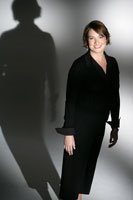Magnificent Flooring with a Story to Tell
 One of my favorite eco-friendly products is reclaimed wood flooring, and a fantastic source here in Scottsdale is Vintage Hardwoods. They offer a wide variety of wood species sourced from the US and Australia. Reclaimed wood already has that beautiful patina of wear and a story to tell - something we often try to achieve through artificial aging processes, with sometimes less than fabulous results.
One of my favorite eco-friendly products is reclaimed wood flooring, and a fantastic source here in Scottsdale is Vintage Hardwoods. They offer a wide variety of wood species sourced from the US and Australia. Reclaimed wood already has that beautiful patina of wear and a story to tell - something we often try to achieve through artificial aging processes, with sometimes less than fabulous results.  By using the wood from old barns, sheds and other structures which are going to be torn down, we save new trees from being cut down, avoid sending smoke and ash into the air (because often these buildings are burned rather than torn apart), and are able to experience some incredibly beautiful woods that may not even be around anymore.
By using the wood from old barns, sheds and other structures which are going to be torn down, we save new trees from being cut down, avoid sending smoke and ash into the air (because often these buildings are burned rather than torn apart), and are able to experience some incredibly beautiful woods that may not even be around anymore. Vintage Hardwoods resources, gathers and re-mills all their own wood. They specialize in longer planks which, while more difficult to remove from the old structures they were originally a part of, create a longer lasting and more beautiful floor. Often their wood comes from smaller structures, as well - those that many people don't want to hassle with disassembling and transporting.
Vintage Hardwoods resources, gathers and re-mills all their own wood. They specialize in longer planks which, while more difficult to remove from the old structures they were originally a part of, create a longer lasting and more beautiful floor. Often their wood comes from smaller structures, as well - those that many people don't want to hassle with disassembling and transporting.  Vintage Hardwoods uses water based stains and low VOC glues to finish and install the planks in your rooms. Each installation is provided a plaque that identifies the wood species and where it was sourced from, as well as the approximate date of its first use.
Vintage Hardwoods uses water based stains and low VOC glues to finish and install the planks in your rooms. Each installation is provided a plaque that identifies the wood species and where it was sourced from, as well as the approximate date of its first use.
By its nature, reclaimed wood is always unique and available in limited quantities. Some of my favorites are shown below. Reclaimed Australian Sheep Wood
Reclaimed Australian Sheep Wood
We call it "sheep wood" because it is authentic floor planking removed from original sheep shearing facilities and wool sheds in Western Australia. The white gum species were used because their extreme hardness and durability were able to withstand the constant traffic of the sheep.
We locate this wood, import it and then restore it in our mill. We preserve it's original character while revealing a new beautiful complexion. The result is a luxurious floor reminiscent of the frontier days of the outback.
Woods from these eucalyptus families are beautiful and elegant. They are characterized by a smooth, creamy grain and original nail holes darkened by decomposed nails. The natural color is a light reddish brown with hints of chocolate.  Reclaimed Australian Spotted Gum
Reclaimed Australian Spotted Gum
Historically, spotted gum was used in Australia for construction piles and shipbuilding. Its long fibers give it an excellent "power to weight" ratio and high resilience. The original timbers came from Australia's east coast in a section from the far south to Queensland. Spotted gum has varied grain patterns and colors ranging from light mocha to pale blond with peach undertones.  Reclaimed Vintage Oak
Reclaimed Vintage Oak
For hundreds of years oak has been used to build barns and warehouses. Oak is a popular choice for reclaimed flooring because of its very fine grain patterns, interesting knots, and nail holes with mineral stains left by decomposed nails. Other characteristics include saw marks, hairline cracks, and occasional worm holes. Reclaimed oak has beautiful nut-like tones ranging from a deep mocha to light cream.  Reclaimed Vintage Heart Pine
Reclaimed Vintage Heart Pine
With its strength and durability, heart pine was used extensively in shipbuilding, as well as for houses, barns, factories and warehouses. The supply of this wood is limited because the old-growth yellow pine trees were all cut down by the early 1930s. This beautiful reclaimed flooring is characterized by its varied grain patterns and unique colors of light gold, shades of red, orange, brown, and dark honey. The dramatic coloration is created by an oxidation process; the planks change color as they are exposed to season after season of heat, cold, snow and rain. The planks expand and contract as they go through the seasons, becoming harder as the colors deepen. The sapwood begins to crystallize and deepen in color. Other characteristics of reclaimed heart pine include knots, nail holes, mineral stains and occasional saw marks.  Reclaimed Vintage Sycamore
Reclaimed Vintage Sycamore
The hearty sycamore tree has the largest leaf of any tree native to North America. It was used primarily for barns built in the mid 1800's. The sapwood of sycamore is white to light yellow, while the heartwood is light to medium brown. This beautiful wood has a fine, close texture with an interlocking grain. Reclaimed sycamore is characterized by its light, creamy color, dark knots, nail holes with mineral stains and occasional saw marks.
























